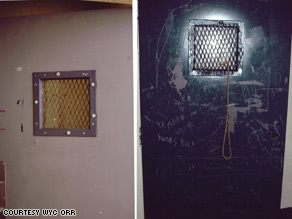Children with autism have distinctive patterns of brain activity
Researchers say they have identified a unique 'signature' of autism in the brains of children with the condition
- guardian.co.uk,
- Article history

The pattern of brain activity in children with autism spectrum disorder (ASD) is markedly different from that of children without the condition, according to a new brain-imaging study.
The work, which shows that ASD has a "signature" in the brain, may lead to a better understanding of which parts of the brain the condition interferes with and how some people, despite having a high genetic risk of developing the condition, manage to compensate for its effects.
ASD is a genetically influenced condition that affects the development of children's brains, with symptoms that include difficulties with social communication, interaction and imagination.
Hundreds of genes may contribute to the condition and scientists believe that individual cases of ASD could correspond to different patterns of genetic variation, which could lead to measurable differences in the way that the brains of autistic children function.
Dr Martha Kaiser and Professor Kevin Pelphrey of Yale University led a team of researchers that explored this idea by studying how children's brains responded to videos of people moving around them.
"As intrinsically social creatures, humans typically exhibit robust visual sensitivity to other people's movements," they write today in the journal Proceedings of the National Academy of Sciences.
"This is well illustrated by the discovery that point-light displays (ie videos created by placing lights on the major joints of a person and filming them moving in the dark), although relatively impoverished stimuli, contain sufficient information to identify the kind of motion being produced (eg walking, dancing, reaching) as well as the identity of the agent."
Previous research found that two-year-olds with autism did not turn to face point-light displays of "biological motion".
In their study, Kaiser and Pelphrey placed 62 children aged from 4 to 17 years old into functional magnetic resonance imaging (fMRI) scanners and monitored their brain activity as they watched a point-light display of biological motion and another of scrambled dots.
In the group, 25 children had ASD, 20 were the siblings of children with ASD but did not display any symptoms themselves, and the remainder were "typically developing" children.
The researchers identified three signatures of brain activity that corresponded to the different children's responses to the point-light displays.
Relative to the other groups, there was reduced activity in specific brain regions in children with ASD when they were watching biological motion compared with scrambled motion.
These included the right amygdala and the ventromedial prefrontal cortex, areas which other research has identifed as having changed activity in adults with ASD.
The researchers found additional brain regions that showed reduced activity in both the siblings group and the ASD group, relative to the typically developing group.
They interpreted this result as a reflection of the underlying genetic vulnerability that the siblings group might have to ASD.
The scientists also found what they called "compensatory activity" in the siblings group – brain regions that were working harder than normal and might be helping the children overcome their increased genetic risk of ASD.
These included the right posterior temporal sulcus and the ventromedial prefrontal cortex, which have been implicated in social perception and social cognition.
"These regions might reflect the absence of additional genetic or environmental factors that confer risk for ASD," the researchers wrote.
"Alternatively, they could represent a process through which brain function was altered over development to compensate for an increased genetic risk to develop ASD."
Dorothy Bishop, a professor of developmental neuropsychology at Oxford University, said: "This is a potentially interesting study that looks for brain markers of underlying abnormality in children with autism in response to viewing dot patterns that indicate biological motion."
But she added: "More controversially, the authors also propose that other brain regions are under-responsive to biological motion in siblings of children with autism, as well as in those with autism.
"Yet other regions are reported to be overactive in the siblings, and this is interpreted as compensatory activity.
"Since these siblings had no subclinical symptoms of autism, and were selected to have no other relatives with any autistic features, they are unlikely to constitute a group with strong genetic risk for autism, and so this aspect of the results is puzzling and it would be important to replicate it in another sample."
The researchers themselves admitted that further studies would be needed to determine the precise functions of the "compensatory" brain activity that they had identified.
But if confirmed, they said, these could "represent important targets for treatments and provide a measure of the effectiveness of intervention, as well as a better understanding of the mechanisms through which successful treatments function".
Source: http://www.guardian.co.uk/science/2010/nov/15/children-autism-patterns-brain-activity

